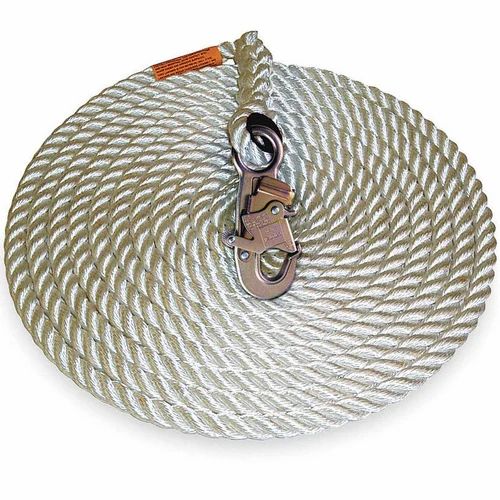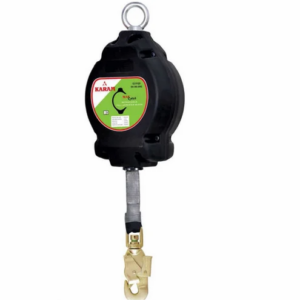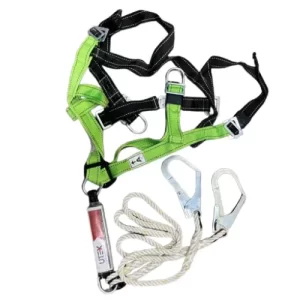Lifeline Rope Manufacturers & Suppliers: Ensuring Safety and Reliability
Lifeline ropes are critical safety components used in various industries, from construction and rescue operations to climbing and marine applications. Choosing the right lifeline rope manufacturer and supplier is paramount for ensuring safety and reliability. This guide explores the key aspects of this industry, helping you make informed decisions.
What are Lifeline Ropes?
Lifeline ropes are specifically designed to provide a secure connection for fall protection, rescue, and other safety-critical applications. They are engineered to withstand significant loads and provide a reliable means of support.
Why are Lifeline Ropes Essential?
Lifeline ropes play a vital role in protecting individuals in hazardous environments. They are essential in:
Fall Protection: Lifeline ropes are used in fall arrest systems to prevent workers from falling from heights.
Rescue Operations: Rescuers rely on lifeline ropes to safely access and retrieve individuals in distress.
Climbing & Mountaineering: Climbers use lifeline ropes for lead climbing, rappelling, and anchor systems.
Marine Applications: Lifeline ropes are used on boats and ships for various purposes, including mooring, anchoring, and rescue.
Industrial Safety: Lifeline ropes are used in various industrial settings for lifting, securing loads, and other safety-related tasks.
Key Features of Lifeline Ropes:
Strength & Durability: Lifeline ropes must be strong enough to withstand the intended loads and resistant to abrasion, wear, and environmental factors.
Material: Different materials are used for lifeline ropes, including nylon, polyester, polypropylene, and high-performance fibers like Dyneema and Kevlar. The choice of material depends on the specific application and requirements.
Construction: The construction of the rope (e.g., braided, twisted, kernmantle) affects its strength, flexibility, and handling characteristics.
Diameter: The diameter of the rope influences its strength and handling.
Elongation: Some ropes are designed to stretch under load (dynamic ropes), while others have minimal stretch (static ropes). The choice depends on the application.
UV Resistance: Ropes used outdoors should be UV resistant to prevent degradation from sunlight exposure.
Chemical Resistance: Consider chemical exposure when choosing a rope material.
Finding Reputable Lifeline Rope Manufacturers & Suppliers:
Choosing a reputable manufacturer and supplier is crucial for ensuring the quality and reliability of your lifeline ropes. Look for:
Experience & Expertise: Manufacturers specializing in rope production have the knowledge and experience to produce high-quality ropes.
Quality Materials: Reputable manufacturers use high-grade materials and adhere to strict quality control processes.
Certifications & Standards: Look for manufacturers and suppliers who comply with relevant industry standards, such as ANSI, OSHA, and EN.
Testing & Inspection: Ensure that the ropes are thoroughly tested and inspected to meet required standards.
Customization Options: Some applications may require customized rope lengths, diameters, or constructions.
Reliable Supply Chain: A dependable supplier ensures timely delivery and consistent product availability.
Comprehensive Product Range: A wide selection of rope types, materials, and sizes allows you to find the perfect rope for your needs.
Strong Customer Support: From product selection to after-sales service, a good supplier provides excellent support.
Questions to Ask Manufacturers & Suppliers:
What materials are used in your lifeline ropes?
What certifications do your ropes hold?
What is the breaking strength of your ropes?
What is the elongation of your ropes?
Do you offer customized rope lengths and constructions?
What is your warranty policy?
What after-sales support do you provide?
Can you provide documentation verifying the rope’s specifications and compliance with relevant standards?
Choosing the Right Lifeline Rope:
Selecting the appropriate lifeline rope depends on the specific application and the hazards involved. Factors to consider include:
Load Requirements: Determine the maximum load the rope will need to support.
Environmental Conditions: Consider factors such as temperature, moisture, and chemical exposure.
Dynamic vs. Static Loads: Decide whether a dynamic or static rope is required.
Rope Diameter and Construction: Choose the appropriate diameter and construction based on the application and handling requirements.
Maintaining Lifeline Ropes:
Proper care and maintenance are essential for ensuring the longevity and safety of lifeline ropes. Follow the manufacturer’s instructions for cleaning, inspection, and storage. Regular inspections should be conducted to identify any damage or wear. Damaged or worn ropes should be immediately replaced.
Investing in high-quality lifeline ropes is an investment in safety. By carefully selecting reputable manufacturers and suppliers, you can ensure that your team has the reliable protection they need.
Keywords: Lifeline rope, lifeline ropes, safety rope, climbing rope, rescue rope, marine rope, industrial rope, fall protection rope, rope manufacturers, rope suppliers, nylon rope, polyester rope, polypropylene rope, Dyneema rope, Kevlar rope, rope construction, rope diameter, rope strength, rope elongation, safety equipment, PPE, personal protective equipment.




